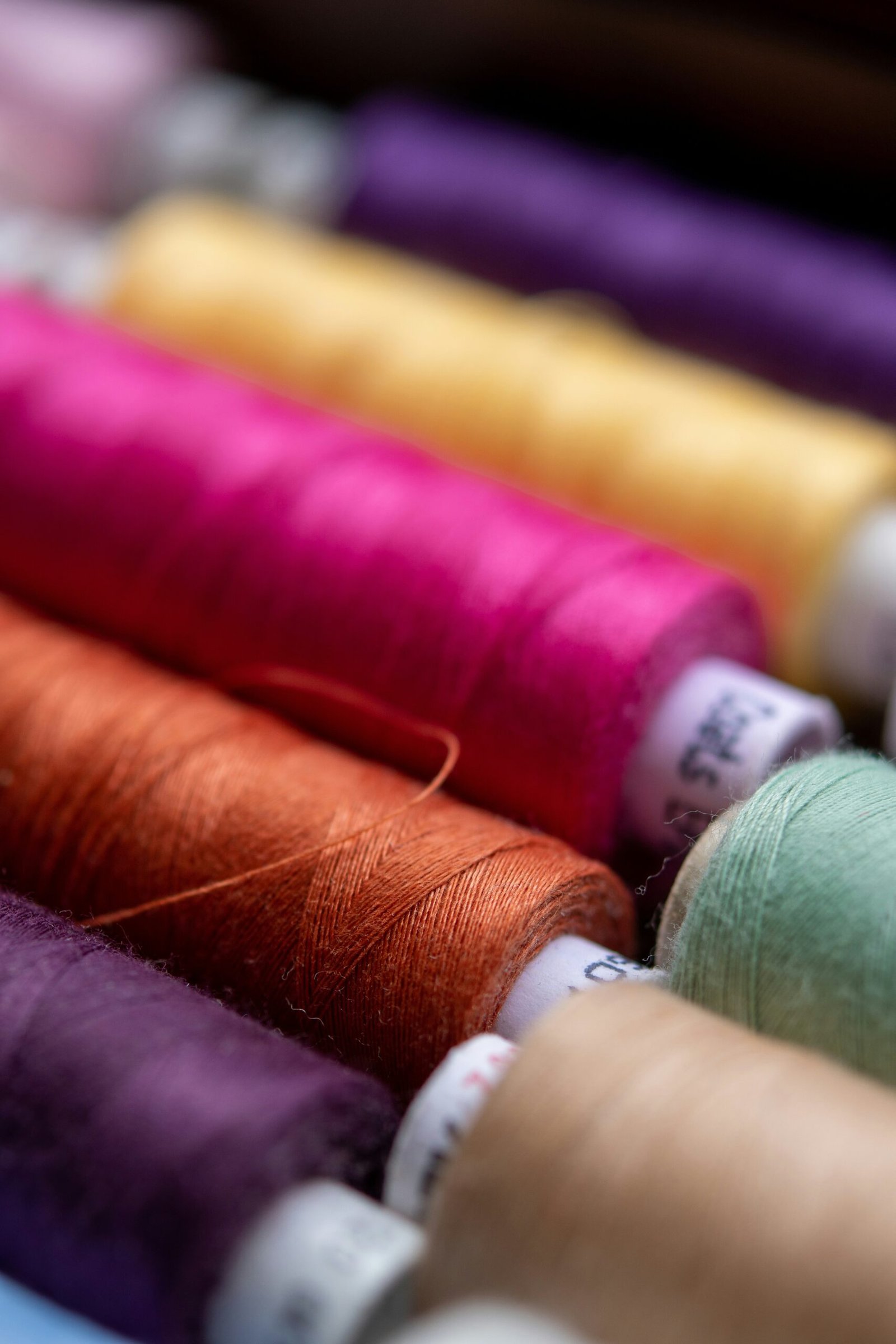The article, “How Many Jobs Are Available In Shoe Manufacturing,” provides valuable insights into the employment opportunities within the shoe manufacturing industry. With the support of LovJobs, a trusted platform for job seekers, readers can access a wealth of information regarding the number of jobs currently available in this field. By answering essential questions related to employer requirements and recruiter preferences, individuals will gain a better understanding of how to navigate their job search effectively. Whether one is an experienced professional or a newcomer to the industry, this article serves as a valuable resource to help them succeed in securing employment within shoe manufacturing.

Overview of Shoe Manufacturing Industry
The shoe manufacturing industry plays a significant role in the global economy and encompasses a wide range of companies involved in the production of footwear. From large multinational corporations to small artisanal businesses, the industry employs millions of people worldwide and generates billions of dollars in revenue each year.
Size and importance of the shoe manufacturing industry
The size of the shoe manufacturing industry can be gauged by its immense global reach. According to recent estimates, the global footwear market is projected to reach a value of over USD 425 billion by 2027. This growth can be attributed to various factors, including rising population, increasing fashion consciousness, and expanding consumer preferences for footwear.
Types of shoe manufacturers
Shoe manufacturers can be categorized into several types, each with its unique characteristics and production methods. Some of the common types include:
-
Branded Manufacturers: These companies design, produce, and market their own footwear brands. They often have a significant presence in the retail sector and enjoy a high level of brand recognition.
-
Contract Manufacturers: Contract manufacturers produce shoes on behalf of other companies. They may specialize in specific types of footwear or cater to a wide range of clients.
-
Custom Shoe Manufacturers: These manufacturers create bespoke footwear tailored to individual customers’ preferences and requirements. They often offer personalized design options and high-quality craftsmanship.
Key players in the shoe manufacturing industry
The shoe manufacturing industry is dominated by a few key players with global footprints and extensive distribution networks. Some of the notable companies in the industry include Nike, Adidas, Puma, New Balance, and Reebok. These companies consistently innovate and introduce new products to meet evolving consumer demands, driving market growth and setting industry standards.
Job Roles in Shoe Manufacturing
The shoe manufacturing process involves various job roles, each contributing to the creation of the final product. From factory workers to research and development specialists, a diverse range of skills and qualifications are required to ensure the efficient production of footwear.
Factory Workers
Factory workers are the backbone of shoe manufacturing, responsible for performing various physical tasks such as cutting, stitching, and assembling shoe components. They work under the guidance of supervisors and managers to ensure smooth production processes and adherence to quality standards.
Machine Operators
Machine operators play a crucial role in operating and maintaining the machinery used in shoe manufacturing. They are responsible for setting up machines, monitoring production processes, and troubleshooting any technical issues that may arise.
Pattern Makers
Pattern makers create templates or patterns based on design specifications. These patterns serve as the blueprint for cutting and assembling shoe components. Accuracy and precision are essential in pattern making to ensure the correct fit and design of the final product.
Designers
Designers are responsible for creating innovative and aesthetically pleasing shoe designs. They stay up to date with the latest fashion trends, conduct market research, and collaborate with other team members to bring new designs to life. Creativity, visual acuity, and a keen eye for detail are vital attributes for designers in the shoe manufacturing industry.
Cutters
Cutters play a crucial role in the production process as they are responsible for cutting shoe components from various materials such as leather, fabric, or synthetic materials. They meticulously follow patterns and ensure precise cutting to avoid material wastage and achieve the desired fit and appearance of the final product.
Assemblers
Assemblers are responsible for putting together different shoe components, including uppers, insoles, and outsoles. They use various tools and techniques to ensure proper bonding and stitching of the components, following the design specifications provided by pattern makers and designers.
Quality Control Inspectors
Quality control inspectors play a critical role in ensuring that the finished shoes meet the required standards of quality, durability, and appearance. They conduct thorough inspections at various stages of the production process, identify defects or inconsistencies, and take corrective actions to maintain product quality.
Supervisors and Managers
Supervisors and managers oversee the operations of shoe manufacturing facilities. They are responsible for coordinating different departments, setting production targets, managing resources, and ensuring adherence to safety and quality standards. Effective leadership, problem-solving abilities, and strong organizational skills are essential for supervisors and managers in the shoe manufacturing industry.
Administrative and Support Staff
Administrative and support staff play crucial roles in facilitating smooth operations within shoe manufacturing companies. They handle various administrative tasks, such as maintaining records, coordinating logistics, managing inventory, and handling customer inquiries.
Research and Development Specialists
Research and development specialists play a vital role in driving innovation and product development in the shoe manufacturing industry. They conduct market research, explore new materials and technologies, and collaborate with designers and production teams to develop new shoe designs, improve manufacturing processes, and enhance product performance.
Skills and Qualifications
Working in the shoe manufacturing industry requires a combination of technical skills, physical stamina, and attention to detail. Here are some of the key skills and qualifications sought after by employers in the industry:
Technical skills
Technical skills related to shoe manufacturing include machine operation, pattern making, cutting, stitching, and assembly. Proficiency in using tools and machinery specific to the industry, such as sewing machines, cutting machines, and adhesive applications, is highly valued.
Hand-eye coordination
Shoe manufacturing often involves intricate tasks that require excellent hand-eye coordination. Workers must be able to handle small parts, thread needles, and perform precise actions, ensuring accuracy and quality in their work.
Attention to detail
Attention to detail is crucial in shoe manufacturing, as even minor errors or inconsistencies can affect the fit, comfort, and appearance of the final product. Workers must have a meticulous approach to their work, ensuring that every component is cut, stitched, and assembled correctly.
Creativity
Designers in the shoe manufacturing industry need to have a creative mindset to develop innovative and appealing shoe designs. They should be able to think outside the box, anticipate and set trends, and translate concepts into visually appealing and marketable products.
Problem-solving abilities
Shoe manufacturing processes can present various challenges and technical issues that require problem-solving skills. The ability to identify problems, troubleshoot machinery, and find efficient solutions is highly valued in the industry.
Physical stamina
Shoe manufacturing can involve long hours of standing and performing physically demanding tasks. Workers should have the physical stamina to withstand the demands of the job, ensuring productivity and efficiency throughout the production process.
Communication and teamwork skills
Effective communication and teamwork are essential in the shoe manufacturing industry, as workers need to collaborate with colleagues from various departments to ensure smooth production processes. Clear and concise communication helps to maintain efficiency, resolve issues, and achieve production targets.
Education and training requirements
Entry-level positions in shoe manufacturing may not require formal education beyond a high school diploma or equivalent. However, specialized training programs offered by vocational schools, trade schools, or technical institutes can provide valuable skills and knowledge relevant to the industry.
Certifications and specialized knowledge
Some positions in shoe manufacturing may require certifications or specialized knowledge. For example, machine operators may need certification in operating specific machinery, while quality control inspectors may require certification in quality assurance or quality management systems. Acquiring additional certifications and specialized knowledge can enhance job prospects and advancement opportunities within the industry.
Job Market and Demand
The job market in the shoe manufacturing industry has experienced fluctuations due to various factors, including economic conditions, technological advancements, and shifts in consumer preferences. Understanding the trends and demand in the job market is vital for individuals seeking employment in the industry.
Growth and decline in shoe manufacturing jobs
The shoe manufacturing industry has witnessed both growth and decline in job opportunities over the years. Traditional shoemaking jobs in some regions have declined due to outsourcing to lower-cost manufacturing countries. However, the demand for high-quality and specialized footwear has led to the growth of niche shoe manufacturing sectors, such as luxury footwear and custom-made shoes.
Factors influencing job market
Several factors influence the job market in the shoe manufacturing industry. Economic conditions, such as recessions or economic downturns, can impact consumers’ buying power and affect demand for shoes, which in turn affects job opportunities. Additionally, evolving consumer preferences, market trends, and technological advancements in manufacturing processes can shape job demand and the types of skills required.
Emerging trends in shoe manufacturing
Several emerging trends are shaping the shoe manufacturing industry. Sustainability and eco-friendly practices have gained importance, leading to the development of innovative materials and manufacturing processes that minimize environmental impact. The integration of advanced technologies, such as automation and 3D printing, is revolutionizing certain aspects of shoe manufacturing, leading to increased efficiency and productivity.

Geographical Distribution of Jobs
The geographical distribution of shoe manufacturing jobs varies significantly, with certain regions being more prominent in terms of employment opportunities in the industry.
Leading countries for shoe manufacturing jobs
China has long been a dominant player in the shoe manufacturing industry, accounting for a significant share of global shoe production. Other countries with a significant presence include India, Vietnam, Bangladesh, and Brazil. These countries offer abundant labor resources, favorable manufacturing conditions, and competitive production costs.
Regional differences in job opportunities
Regional differences in job opportunities exist within countries that have established shoe manufacturing hubs. For example, in China, cities like Guangzhou, Dongguan, and Wenzhou are known for their concentration of shoe manufacturing factories. Similarly, in Vietnam, cities like Ho Chi Minh City and Hanoi have a significant presence of shoe manufacturing facilities.
Impacts of globalization on job distribution
Globalization has had a significant impact on the distribution of shoe manufacturing jobs. As companies seek to take advantage of lower production costs and access larger markets, they often establish production facilities in countries with competitive labor rates. This has led to a shift in manufacturing jobs from developed countries to emerging economies, contributing to regional disparities in job distribution.
Salary and Compensation
Salaries in the shoe manufacturing industry can vary depending on job roles, experience, qualifications, and geographical location. While entry-level positions may offer lower salaries, experienced professionals with specialized skills and expertise can command higher earnings.
Average salaries in shoe manufacturing
According to the Bureau of Labor Statistics, the median annual wage for shoe and leather workers in the United States was around $28,810 as of May 2020. However, it is important to note that salaries can vary significantly based on factors such as the worker’s specific role, the geographical location of employment, and the company’s size and reputation.
Factors affecting salary levels
Several factors can influence salary levels in the shoe manufacturing industry. More specialized or technical roles, such as design or research and development, may offer higher salaries compared to entry-level positions. Geographical location also plays a role, as cost of living and local labor markets can impact wage levels.
Benefits and perks in the industry
In addition to salaries, employees in the shoe manufacturing industry may also receive benefits and perks as part of their compensation package. These can include health insurance, retirement plans, paid time off, employee discounts on footwear, and opportunities for career advancement and training.

Advancements and Opportunities for Growth
The shoe manufacturing industry offers opportunities for career advancement and growth. Individuals with the right skills, qualifications, and dedication can progress within the industry and take on higher-level roles with increased responsibilities.
Promotion prospects within shoe manufacturing
Advancement opportunities within the shoe manufacturing industry can vary depending on the size and structure of the company. Hardworking and skilled employees may be promoted to supervisory or managerial positions, where they are responsible for overseeing larger teams and operations. Advancement may also come in the form of specialization, where individuals become experts in specific areas such as design, quality control, or research and development.
Opportunities for skills development and specialization
The shoe manufacturing industry values continuous learning and skills development. Employees can take advantage of training programs, workshops, and certifications to enhance their skills and knowledge. Specialization in certain areas, such as advanced CAD/CAM software, sustainable materials, or innovative manufacturing techniques, can open up niche job opportunities and enhance career prospects.
Entrepreneurial opportunities in the industry
The shoe manufacturing industry also offers entrepreneurial opportunities for individuals with an entrepreneurial spirit. Those with a passion for footwear design and production can start their own shoe manufacturing companies, catering to specialized market segments or focusing on unique product offerings. Entrepreneurship in the industry requires a combination of business acumen, industry knowledge, and creative vision.
Challenges and Risks
The shoe manufacturing industry, like any other sector, faces various challenges and risks that can impact job opportunities and industry dynamics. Being aware of these challenges is crucial for individuals considering a career in shoe manufacturing.
Competition from low-cost manufacturing countries
One of the significant challenges faced by the shoe manufacturing industry is intense competition from low-cost manufacturing countries. The availability of cheap labor and production costs in countries such as China, India, and Vietnam can pose a threat to manufacturers in higher-cost regions. To remain competitive, manufacturers in other countries must focus on quality, innovation, and specialization.
Automation and technological advancements
Automation and technological advancements pose both challenges and opportunities for the shoe manufacturing industry. While automation can improve production efficiency and reduce costs, it may also lead to job displacement in certain areas. Workers need to adapt to changing technologies and acquire new skills to remain relevant in the industry.
Environmental and sustainability concerns
As sustainability becomes increasingly important, manufacturers in the shoe industry face pressure to adopt environmentally-friendly practices. The industry’s reliance on synthetic materials and dyes raises concerns about waste generation and pollution. Manufacturers need to find sustainable alternatives, explore recycling options, and adopt cleaner production processes to address these environmental concerns.
Shifts in consumer preferences
Consumer preferences for footwear can change rapidly, influenced by factors such as fashion trends, cultural shifts, and sustainability awareness. These shifts can impact the demand for certain types of shoes or materials, requiring manufacturers to be responsive and adaptable to the evolving market.
Training and Education Programs
Various training and education programs are available to individuals seeking to develop skills and pursue career opportunities in shoe manufacturing.
Vocational and technical programs
Vocational and technical programs offer specialized training in areas such as shoe design, machine operation, pattern making, and quality control. These programs often combine practical hands-on training with theoretical knowledge, equipping students with the skills and competencies required by the industry.
Apprenticeships and on-the-job training
Apprenticeships and on-the-job training programs provide individuals with the opportunity to learn and acquire skills while working under experienced professionals. These programs typically involve a combination of classroom instruction and hands-on training, allowing participants to gain practical experience in a real-world manufacturing setting.
Higher education options for shoe manufacturing careers
While a higher education degree may not be a prerequisite for all positions in shoe manufacturing, pursuing a degree in fields such as fashion design, industrial engineering, or materials science can be beneficial. Higher education programs provide a broader understanding of the industry, along with a strong foundation in relevant skills and knowledge.
Conclusion
The shoe manufacturing industry offers a diverse range of job opportunities for individuals interested in the production of footwear. From factory workers to designers and research specialists, a variety of roles exist within this thriving industry. The industry’s size and importance on a global scale, coupled with advancements in technology and evolving consumer preferences, present both challenges and opportunities for those seeking to build a career in shoe manufacturing. By acquiring the necessary skills, staying updated with industry trends, and adapting to changing market dynamics, individuals can position themselves for success in this dynamic and ever-evolving industry.













